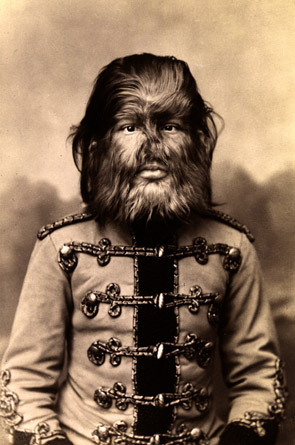
JOJO: The Russian Dog Face Boy
Charles Eisenmann (c 1884)
Diane Arbus & Charles Eisenmann
2000.9.18- 10.28
The term 'freak' in contemporary culture has come to describe a variety of extraordianry or abnormal features and or characteristics, commonly tied with slang. The word itself has a respectively long history, reflecting upon our distinguished understanding of what we consider as 'normal' and 'abnormal'. Before such wide popularity of the term in common culture, a freak was used to describe the physically deformed; freaks were sideshow performers and entertainers, showing off their extraordinary appearances. Photographer Charles Eisenmann, who held a studio on Bowery in New York City during the late 1880s, captured and left an archive of portraits of such entertainers. Alongside such beautiful Eisenmann portraits, we present Diane Arbus, whose portraits capture the physically normal. The combination of works by these two artists make a sharp contrast while diffusing the thin line between our understanding of 'normal' and the 'abnormal'.
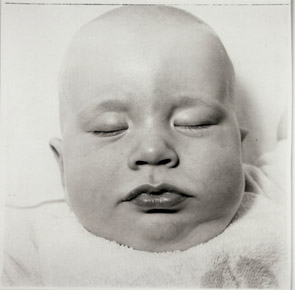
The Son of Gloria Vanderbilt
Diane Arbus 1964
As disturbing as the images may seem, and contrary to what some may believe, it is interesting to learn that many of Eisenmann's sitters enjoyed a healthier social climate and had better social oppurtunities than what people of the same stature would today. As long as their features were not life threatening, the freaks did not have to undergo the surgeon's knife to live a fulfilled life. Eisenmann has managed to capture the nobility of each sitter; it is as though the physical deformations of each sitter subliminates the normality within. Eisenmann almost seems passive in his work; he captures the entertainers as normal people, and we find nothing abnormal beyond their physical appearance. In contrast, Arbus's work portray a freak within, at times even more disturbing than what meets the eye.
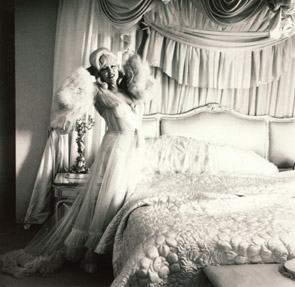
Mae West: Once Upon Our Time
Dinae Arbus 1965
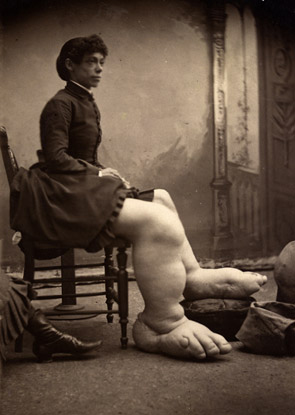
Fanny Mills: The Ohio Big Foot Girl
Charles Eisenmann (1880s)
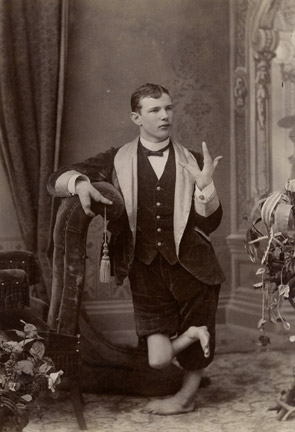
Fred Wilson: Lobster Boy
Charles Eisenmann (c 1885)
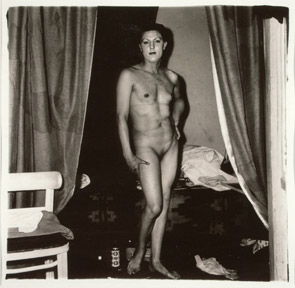
Naked Man being a Woman, NYC
Diane Arbus (1968)
The works of both artists realizes that we are who we are. The mixed emotions aroused by these portraits only reflect who we all are as an individual, and cannot be categorized simply as grotesque or even obscene. It is beyond these social idioms that we discover the true beauty of our fundumental existence.
BACK

